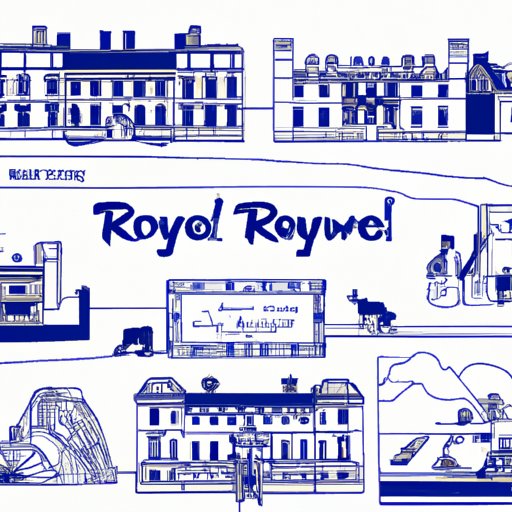
I. Introduction
When it comes to attracting tourists to a country, there’s no denying the power of a royal family. For decades, the British Royal Family has been an instrumental part of the UK’s tourism industry, drawing visitors from all over the world with their charm, historical significance, and cultural cachet. Today, we will explore just how much money the royal family is bringing in tourism, and how they are boosting the UK’s bottom line.
II. The Economic Impact of the Royal Family on Tourism: How They Boost the UK’s Bottom Line
The British Royal Family plays a huge role in driving tourist numbers to the UK. From attracting curious history buffs to inspiring fans of royal pageantry, the monarchy is an ever-popular subject of fascination for many visitors. These tourists, in turn, contribute heavily to the UK economy through their spending on hotels, restaurants, transportation, and more. According to Visit Britain, tourism from overseas visitors in 2019 generated £28.4 billion in revenue for the UK economy alone.
III. Following the Royals: A Look into the Financial Benefits of Royal Tourism
One of the primary draws of visiting the UK is exploring the many royal sites and attractions that dot the country. From Buckingham Palace and Windsor Castle to the Tower of London and Hampton Court Palace, these historical landmarks are replete with stunning architecture, art, and artifacts. The royal family plays a significant role in promoting these attractions, attending ceremonies and public appearances to garner interest from visitors from all over the world. Local tourism boards and businesses also capitalize on the popularity of royal-themed tourism, offering everything from walking tours to souvenir shops that specialize in royal memorabilia.
IV. The Crown Jewels of Tourism: Exploring the Monetary Value of Royal Attractions
So just how much revenue is generated by these attractions? According to a report by the Association of Leading Visitor Attractions, Buckingham Palace, the flagship royal home and attraction, drew in nearly 626,000 visitors in 2019 alone, generating £20.4 million in revenue. By comparison, the Tower of London, another major royal attraction, drew in almost 3 million visitors in the same year, generating over £60 million in revenue. These figures alone give a sense of just how significant a role royal tourism plays in the UK economy.
V. Beyond Buckingham Palace: How the Royal Family Generates Revenue for the UK’s Tourism Industry
While well-known attractions certainly draw droves of visitors, the royal family generates tourism interest in other ways as well. Royal events, such as weddings and coronations, provide a significant boost in tourism and public interest from around the world. Prince William and Kate Middleton’s 2011 wedding, for example, drew in an estimated 1 million visitors to London, while the 2018 nuptials of Prince Harry and Meghan Markle also generated significant tourism interest and spending. Moreover, as a cultural institution, the royal family is tied to the UK’s history and legacy in significant ways, inspiring visitors to explore the country’s other cultural landmarks, such as its theatres, museums, and galleries.
VI. From Windsor Castle to Kensington Palace: Estimating the Contribution of the Royal Family to UK Tourism Revenue
Altogether, the monetary value of the royal family’s contribution to UK tourism revenue is significant. According to Visit Britain, in 2019, an estimated 38 million overseas visitors came to the UK, spending £28.4 billion in revenue. Given the popularity of royal-themed attractions, merchandise, and events, it is possible that the royal family played a role in a significant percentage of that revenue.
VII. Conclusion
Overall, it is clear that the British Royal Family plays a vital role in the country’s tourism industry and economy. From generating interest in historical landmarks to inspiring cultural exploration, the royals remain a fascinating and influential force in tourism. As the world continues to recover from the COVID-19 pandemic and travel restrictions ease up, tourism professionals and policy makers would do well to keep an eye on the royal family’s continued impact on the industry.





